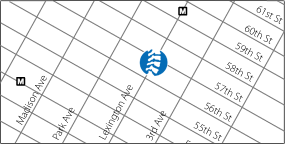Ankle Pain and Running, Part 2
 Dr. Marc A. Bochner on
Dr. Marc A. Bochner on  Wednesday, November 8, 2006 at 11:15AM
Wednesday, November 8, 2006 at 11:15AM In part 1 of this article, I discussed how hidden ankle problems, caused by “scar tissue,” can affect the kinetic chain and cause injury elsewhere, such as a stubborn hamstring strain, knee pain, or even back pain. I am not referring to a brand-new, acute injury, but dysfunction that may be present from an injury a long time ago. Here in Part 2, how to find out if you have hidden ankle injury will be discussed, as well treatment and some of the exercises to do to fix it and get you healthy again.
The first step is to test your ankle for the scar tissue. One way to do this is to self-test your ankle for tenderness, restricted range of motion/muscle tightness, and decreased balance ability. As presented in part 1, there are two main groups of ligaments in the ankle, the lateral (outer) group, and the medial (inner) group. It may help to look at the diagrams from part 1. To test the lateral ligaments, start by locating the end of your fibula, which is marked by a thickening of bone called the lateral malleolus. Then run your fingers forward about half an inch, and you will be on the most commonly injured ankle ligament, the anterior talofibular ligament. Often only mild pressure is necessary to note some tenderness. Compare both ankles simultaneously. If one side is tenderer, there may be a problem with the ligament. For the remaining two lateral ligaments, you have to move your fingers straight downward and slightly backward from the lateral malleolus and test for tenderness there (calcanealfibular ligament), and also move straight backward from the malleoulus about half an inch and test there (posterior talofibular ligament). For the medial ligaments, find the medial malleolus, which is the thickened bone on the end of the inner tibia. If you move your fingers forward half an inch, you will be on the anterior tibiotalar ligament. Slightly below that is the tibionavicular ligament. After checking for tenderness in these, again start at the medial malleolus and move straight down, and you will be on the tibiocalcaneal ligament. Finally, from the malleolus move straight back and slightly downward and you will be on the posterior tibotalar ligament. Again, for all these ligaments, compare left and right, noting any tenderness. Healthy ligaments are not painful to touch, even with relatively deep pressure! It is possible to have problems on both left and right sides. If you have difficulty finding the ligaments it may be necessary to seek help from a knowledgeable sports medicine professional.
The next step is to test for reduced range of motion. Two tests can be done. Don’t worry; no major anatomical knowledge is necessary for this one. Sit on the floor, with your legs straight out in front of you, and no shoes on. The first test is to just stretch your calf muscles by actively bringing your foot straight up towards your shin. Do this on the left and right simultaneously, looking for a decrease in the range of motion. You should be able to bring the foot up 20-30 degrees from the rest position. If you use a rope to pull even further, up to 45 degrees may be possible. If there is restriction, it may be in the calf muscles behind you leg, or in the ankle joint itself, or both. Tightness in the ankle joint may mean the ligaments have scar tissue that needs to be released, as the tissue is restricting the ankle bone (talus) from moving. If you only feel muscle tightness, then you may only have shortened calf muscles on that side. If the muscle has been tight for a long time or has had previous injury, it may also have scar tissue that needs to be released. The second test involves putting your foot on the ground, knees bent, and sliding them away from you. Do not let your heels come off the floor. One side may feel more limited. If it does, again it can be either in the joint or the muscles. In this test, the muscles in front of the leg are being tested.
The third self-test is for decreased balance ability. Standing barefoot in a doorway, bend one leg at the knee. You are testing the leg on the ground. If your balance is proper, you should be able to stand straight for 30 seconds without picking up on either the inside or outside of your foot and without your hands reaching side to side significantly for the doorway. As mentioned in part 1, scar tissue in the ligaments can alter your balance ability.
Now, if you have found problems, fixing them usually involves a combination of professional treatment and self-treatment with exercises. When I look for this hidden ankle dysfunction in a patient, the same tests mentioned above are part of my exam. I also watch the patient walk and run, to evaluate how the ankle joint is moving in real life. This helps give a proper diagnosis of why the ankle is not working correctly and/or if the ankle is playing a role in injury elsewhere. The scar tissue will be more developed the more severe the original injury was, and the longer the period of immobilization that may have occurred. Even though it is optimum to get any injury treated as early as possible, the scar tissue can still be made more flexible and actually heal to be much more like the original ligament tissue if it is discovered later on.
To do this, treatment involves restoring length to the scar tissue, which then helps restore the range of motion to the ankle joint. This is done by soft-tissue techniques, such as Active Release Technique (ART) and cross-friction massage. In ART, the provider makes a specific finger contact at the site of the scar tissue, and then the ankle is moved to create tension on the ligament as the provider maintains the contact. The contact and tension is in line with the fibers of the ligament. This combination of tension and movement “breaks up” the scar tissue, restoring proper length and strength to the ligament. In cross-friction massage, the scar tissue is broken up by a finger or massage tool contact moving across the fibers of the ligament. All the ligaments, plus the joint capsule, must be evaluated.
Once the scar tissue in is treated, the muscles are checked. Scar tissue in the muscles is often called “adhesions”. ART is very effective at breaking up the muscular adhesions as well. Besides the calf muscles, the rest of the body must be checked. With chronic ankle injury, there often can be a reflex weakening of the gluteus medius, or hip abductor, so it may have adhesions and weakness. Also, the original ankle injury may be related to a nerve problem (sciatic nerve, for example) anywhere from the ankle to the lower back, as nerve entrapment can weaken the leg muscles and pre-dispose to a sprained ankle. Thus the back should also be evaluated and treated as necessary.
Once you have been treated, stretching exercises must be done to maintain the increased range of motion. To stretch the gastrocnemius muscle in the back of the leg, use a towel or rope, just as in the range of motion test described above. Actively move the foot towards the shin, using the rope to assist the last quarter of the stretch, and hold for 2 seconds. To stretch the soleus muscle, which doesn’t cross the knee joint, bend your knee and then use your hands to pull the foot upward. There will not be as much movement in this stretch. To stretch the tibialis anterior in front of the leg, from a sitting position, bend the leg to be stretched and place the leg over the straight leg above the knee. Then take your opposite hand and pull the foot downward gently and holding for 2 seconds. Repeat all of these stretches 5-10 times, attempting to move further each time but not forcing the stretch.
Strengthening exercises include using elastic tubing in two ways. One is to do small movements for 10-60 seconds. Small movements help improve coordination, as well as strength and endurance. Start in the middle of the range of motion of the exercise and move 5-10 degrees in both directions. Speed can be increased as endurance is gained. In the beginning you may only be able to do 10 seconds before fatigue sets in. Do a total of 60 seconds, by building up to 2 x 30 seconds. The other tubing exercise is to do full range of motion for either time or repetitions. Internal rotation, external rotation, plantar flexion and dorsiflexion all can be done for these exercises.
Balance exercises must also be done, to restore the lost proprioception that occurs with chronic ankle injury. First, simply repeat the self-test described above, for a total of 60 seconds standing (2x 30 seconds). Once this is easy, try with the eyes closed. Then, balance boards and rocker boards also can be used.
If hip or lower back/core muscle weakness was found with examination, then strengthening for those areas must be done as well. Once all weak areas have been strengthened and balance ability improved, running drills and plyometric (jumping) exercises for coordination, power and agility can be added. This complete approach, starting with removing soft-tissue restriction, then improving range of motion, strength, and balance, can help the body heal hidden ankle injury and the problems it may lead to along the kinetic chain.



